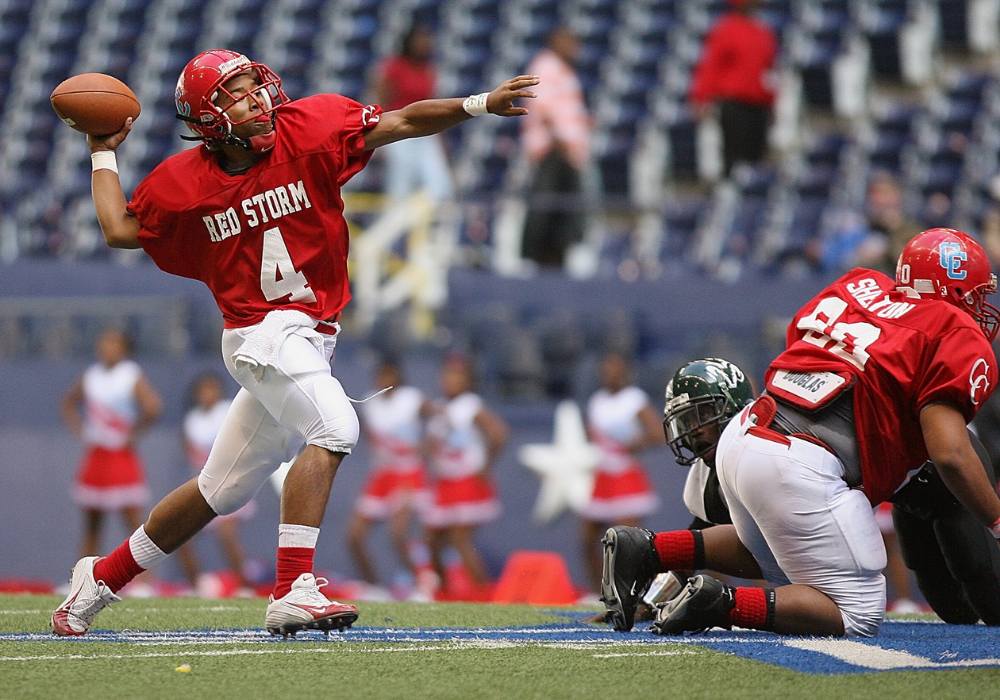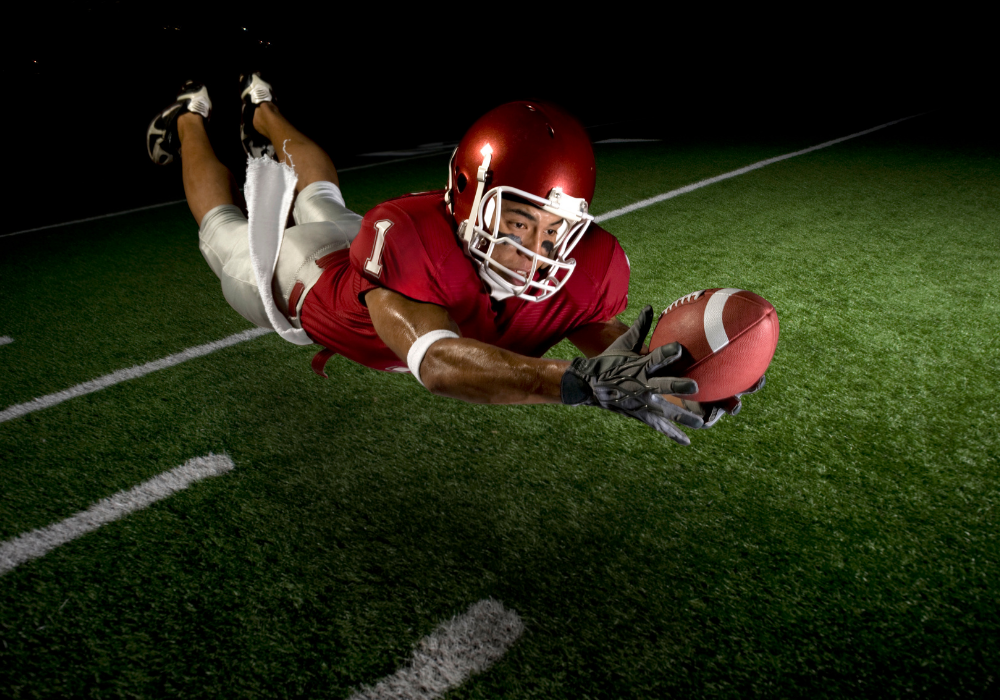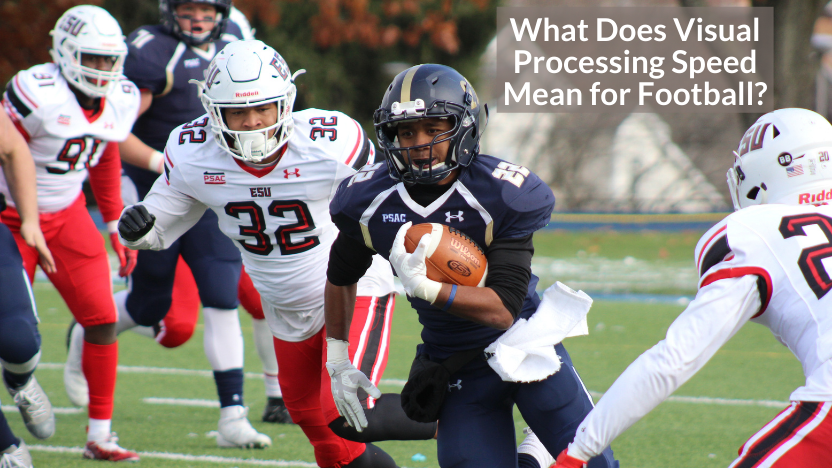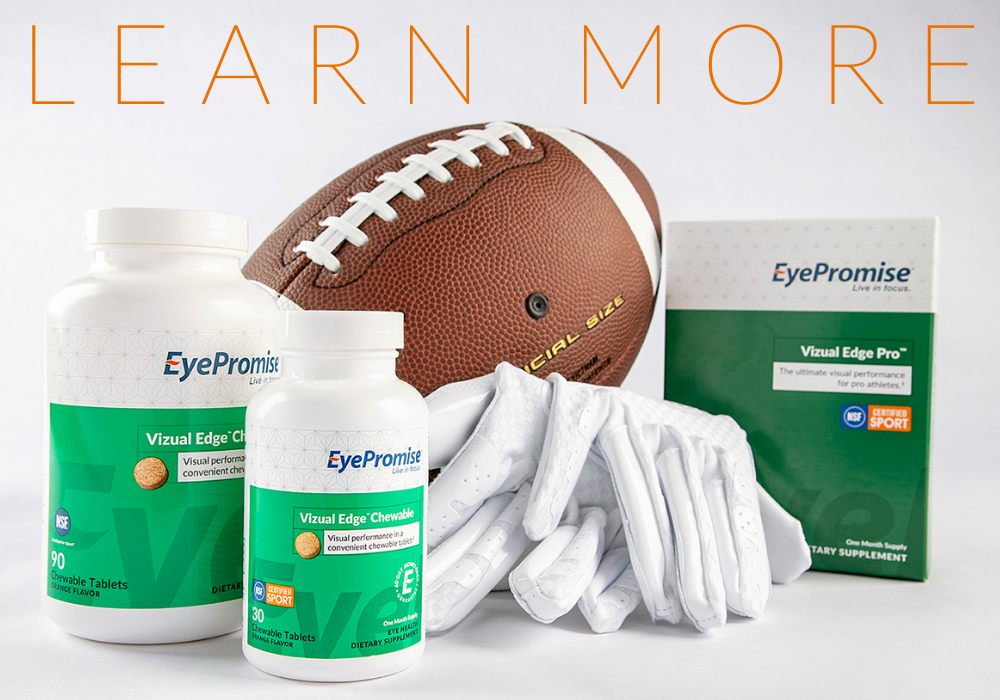What Does Visual Processing Speed Mean to a Football Player?
Posted by EyePromise on Nov 10th 2021
We talk a lot about baseball because we’re the official eye vitamin of the Boston Red Sox. However, baseball isn’t the only sport that can benefit from better vision and faster processing speeds. Fall is famous for football, and we’re looking at how visual processing speed can impact certain positions on the field.
Quarterback

Arguably the most important position on the field, the quarterback is at the helm of decision making for the offense. They need to be able to see their options clearly in a sea of moving elements, and they need to be able to react quickly if a play goes south. Faster visual processing speeds help quarterbacks identify their lanes and act quicker, ultimately helping them make better decisions in the heat of the moment. This also helps them avoid sacks if the defense blitzes.
Wide Receiver

Another important position, the wide receiver is the position that typically receives longer throws from the quarterback. With this position, visual processing speed is imperative for reading and anticipating the pass. As much as we’d all like them to be, passes from a quarterback are not always perfect. Faster processing speeds can help wide receivers see the discrepancy and adjust their run route and potentially catch a pass that would have otherwise been incomplete.
Additionally, as they’re running, wide receivers need to be able to process what’s in front of them and make the correct decision for advancing the ball. However, their decision making doesn’t stop there. They need to be able to react quickly to oncoming defenders, dodging their tackle attempts and avoiding other defensive players. On top of defensive players coming at them from all angles, wide receivers need to be able to actually see the pass. If they visual performance is lacking, they can lose the ball against the dark night sky or in the bright light of a stadium or the sun.
Free Safety

Defensively, a free safety may be the position that would benefit most from improved visual processing speeds. This is because a free safety’s role on the team evolves as play develops. If they can’t process what they’re seeing unfold quickly, they can miss an opportunity to shut down the offense. Anticipating a run or a pass is one thing but being able to recognize a play and process the required action in a split second can be a make-or-break moment.
Improving Visual Processing Speed and Performance
Other than practicing the infinite number of moves that can occur in a game of football, how can players improve their visual performance? Believe it or not, studies show that increasing your intake of 2 antioxidants that concentrate in the eyes and brain can increase visual processing speeds, reaction time, and visual function. These dietary antioxidants are called zeaxanthin and lutein, but they’re scarce in the average diet. In fact, you’d need to eat 50 ears of corn a day to get the amounts needed to make an impact on visual processing speeds.
EyePromise Eye Vitamins
Luckily, there’s a daily supplement that can provide these amounts of dietary zeaxanthin and lutein. EyePromise is the #1 doctor-recommended eye vitamin company and the choice of professional, collegiate, and Olympic athletes across many disciplines like football, baseball, and tennis. Our vitamins have the highest levels of dietary zeaxanthin available in the ratio necessary to improve visual function and processing speeds.
Learn more about our products that are NSF Certified for Sport. Not sure which is right for you? Take our product selector quiz and have our experts guide you to the right nutritional support for your eyes.
Football is a dynamic sport with many different elements that can affect the game. Having an edge over the competition with faster visual processing speed and reaction times can be the difference maker in a moment, a play, or a game. To learn more about improved visual processing speed, watch our video.


